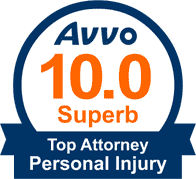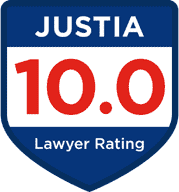Car Accidents While Working: Pursuing Both Workers’ Comp and a Third-Party Claim in Chicago
The screech of tires, the sudden impact – a car accident is a profoundly unsettling event. When this ordeal occurs while you are performing your job duties, the aftermath can be a whirlwind of physical pain, emotional distress, and a pressing series of questions about your financial stability and legal options. If you’ve been involved in such an incident on the bustling streets of Chicago, one of your first thoughts might be about how you’ll cover medical bills and lost wages. Many injured workers are aware of workers’ compensation, but fewer realize that in many situations, especially those involving another party’s negligence, an additional avenue for compensation might be available through a third-party claim.
What Constitutes a “Work-Related” Car Accident in Illinois?
For your injuries from a car accident to be covered by Illinois workers’ compensation, the incident must be legally defined as “work-related.” This generally means the accident must have occurred “arising out of and in the course of employment.” This phrase has specific legal meaning:
- “Arising out of” employment: This refers to the origin or cause of the accident. The injury must be a result of a risk connected with your work or a risk to which your job exposed you. For example, if driving is a part of your job, the inherent risks of traffic accidents are risks of your employment.
- “In the course of” employment: This relates to the time, place, and circumstances of the accident. You must have been engaged in an activity related to your job duties when the accident happened.
Common Scenarios of Work-Related Car Accidents in Chicago:
- Driving a company-owned vehicle as part of your job.
- Traveling between different job sites or client locations (e.g., a consultant driving from one Chicago office to another, or a tradesperson going from a workshop to a customer’s home).
- Making deliveries or sales calls (e.g., a food delivery driver navigating downtown Chicago, or a sales representative driving on the Eisenhower Expressway to meet a client).
- Transporting other employees as part of work duties.
- Running a work-specific errand for your employer (e.g., going to pick up supplies).
- Attending an off-site work-related meeting, conference, or training session.
- Certain “traveling employee” scenarios where an employee has no fixed place of work or is required to travel away from the employer’s main premises.
Workers’ Compensation in Illinois: Your No-Fault Benefit
Illinois workers’ compensation is a state-mandated insurance program designed to provide financial protection to employees who sustain injuries arising out of and in the course of their employment. A key feature of this system is that it is “no-fault.” This means that, generally, you do not need to prove that your employer or anyone else was negligent to receive benefits. As long as your car accident was work-related, you are typically entitled to benefits.
Types of Benefits Available:
- Medical Expenses: Workers’ compensation covers 100% of all reasonable and necessary medical care related to your work injury. This includes emergency room visits, hospital stays, doctor’s appointments, surgeries, physical therapy, prescription medications, and medical devices. You generally have the right to choose your own doctor (two choices, plus their chain of referrals).
- Temporary Total Disability (TTD) Benefits: If your injuries prevent you from returning to work for a period, you are entitled to TTD benefits. These payments are typically two-thirds (66 2/3%) of your Average Weekly Wage (AWW), calculated based on your earnings in the 52 weeks prior to the injury, subject to state-set minimums and maximums. These benefits continue until you return to work or reach Maximum Medical Improvement (MMI), which means your condition has stabilized.
- Permanent Partial Disability (PPD) Benefits: If your work-related car accident results in a permanent impairment or disfigurement, but you are still able to work in some capacity, you may receive PPD benefits. The amount is based on the nature and extent of the impairment, often tied to a schedule for specific body parts (e.g., loss of use of a hand) or a percentage of the “person as a whole” for injuries like back or neck trauma.
- Permanent Total Disability (PTD) Benefits: In severe cases where the injuries from the car accident leave you permanently unable to perform any kind of work, you may be eligible for PTD benefits. These are generally paid for life at your TTD rate.
- Vocational Rehabilitation: If your injuries prevent you from returning to your previous job, workers’ compensation may cover the costs of vocational rehabilitation services. This can include job counseling, retraining for a new position, and job placement assistance.
- Death Benefits: If a work-related car accident tragically results in a fatality, surviving dependents (such as a spouse or children) may be entitled to death benefits, which include a weekly payment and a burial allowance.
Reporting Requirements in Illinois:
To protect your right to workers’ compensation benefits, you must notify your employer of your injury. In Illinois, this notice should ideally be given as soon as possible, but legally you have 45 days from the date of the accident. Failure to provide a timely notice can jeopardize your claim. It’s best to provide notice in writing and keep a copy for your records.
Limitations:
While workers’ compensation provides a safety net, it is important to note its limitations. The “exclusive remedy” provision of the Illinois Workers’ Compensation Act generally means that you cannot sue your employer for negligence related to your work injury, even if they were partially at fault for the conditions leading to the accident. Furthermore, workers’ compensation does not provide any benefits for non-economic damages like pain and suffering, emotional distress, or loss of enjoyment of life. This is a primary reason why exploring a third-party claim is so important.
The Third-Party Claim: Seeking Full Compensation from an At-Fault Driver
While workers’ compensation is your primary recourse against your employer, it does not prevent you from seeking additional compensation from another person or entity (a “third party”) whose negligence caused your work-related car accident. This is a separate civil personal injury lawsuit.
Definition of a Third Party:
A third party is someone other than your employer or a co-worker. In the context of a work-related car accident, common third parties include:
- The driver of another car, truck, or motorcycle who caused the collision through negligence (e.g., speeding, texting while driving, running a red light).
- A trucking company, if their driver was negligent or if the company’s practices (like improper maintenance or pushing drivers to exceed hours-of-service limits) contributed to the crash.
- A vehicle manufacturer, if a defective auto part (like faulty brakes or airbags) caused or worsened the accident.
- A bar or restaurant, under Illinois’ Dram Shop Act, if they over-served alcohol to a driver who then caused your accident.
- A local municipality or construction company, if an unsafe road condition (like a large pothole or poorly marked construction zone) contributed to the accident.
Fault-Based System:
Unlike the no-fault workers’ compensation system, a third-party claim is based on proving fault. To be successful, you must demonstrate that the third party was negligent – meaning they failed to exercise reasonable care, and this failure directly led to your injuries and damages.
Types of Damages Recoverable in a Third-Party Claim:
A significant advantage of a third-party claim is the broader range of damages you can pursue, which often fills the gaps left by workers’ compensation:
- All Medical Expenses (Past and Future): Covering all bills related to your treatment, including anticipated future care.
- Full Lost Wages (Past and Future): Unlike the two-thirds provided by workers’ comp, you can seek 100% of your lost income, including overtime, bonuses, and compensation for diminished future earning capacity if your injuries limit your ability to work long-term.
- Pain and Suffering: Compensation for the physical pain, discomfort, and suffering you have endured and may continue to endure due to your injuries. This is a subjective damage but a very real one.
- Emotional Distress: Damages for psychological impacts such as anxiety, depression, post-traumatic stress disorder (PTSD), and fear resulting from the accident.
- Loss of Enjoyment of Life (or Loss of a Normal Life): Compensation for your inability to participate in hobbies, recreational activities, family routines, and other aspects of life you previously enjoyed.
- Loss of Consortium: If you are married, your spouse may have a claim for the loss of your companionship, affection, services, and society due to your injuries.
- Property Damage: Reimbursement for the repair or replacement of your personal vehicle if it was damaged in the accident (if it was your car being used for work).
- Disfigurement and Scarring: Compensation for permanent physical alterations.
Proving Negligence:
To succeed in a third-party claim, your attorney will need to establish the four elements of negligence:
- Duty: The defendant owed you a duty of care (e.g., all drivers have a duty to operate their vehicles safely and follow traffic laws).
- Breach: The defendant breached this duty (e.g., by speeding, driving under the influence, or being distracted).
- Causation: The defendant’s breach of duty was a direct and proximate cause of your car accident and resulting injuries.
- Damages: You suffered actual harm and losses as a result (medical bills, lost income, pain, etc.). Evidence such as police reports, witness testimony, photos/videos of the scene, medical records, and sometimes expert accident reconstruction analysis is used to prove these elements.
The Legal Process: What to Expect in Chicago
If you’ve been in a work-related car accident in Chicago and are considering pursuing both types of claims, here’s a general outline of the legal process:
Initial Steps After the Accident:
- Safety and Medical Care: Prioritize your health. Seek immediate medical attention.
- Report to Employer and Police: Notify your employer as soon as possible (within 45 days for WC). Ensure a police report is filed if law enforcement responds to the scene.
- Gather Evidence: If able, take photos/videos of the accident scene, vehicle damage, and your injuries. Collect contact information for other drivers and witnesses. Note any dashcam footage or nearby surveillance cameras.
- Preserve Documentation: Keep all accident-related documents, medical bills, pay stubs, and correspondence from insurers in an organized file.
Hiring an Attorney:
It is highly advisable to consult with an attorney early in the process. Look for a law firm in Chicago with specific experience and a proven track record in handling both Illinois workers’ compensation cases and third-party personal injury lawsuits arising from vehicle accidents. Their combined expertise is invaluable.
Investigation Phase:
Once retained, your attorney will launch a thorough investigation, which may include:
- Obtaining the official police accident report.
- Interviewing you and any witnesses.
- Gathering all relevant medical records and bills.
- Documenting your lost wages and other financial losses.
- Inspecting the vehicles involved and the accident scene.
- If necessary, hiring accident reconstruction experts or other specialists to determine fault or analyze complex technical issues.
- For your workers’ compensation claim, they will ensure all necessary forms are filed with the IWCC and manage communications with the WC insurer.
Negotiation and Settlement:
- Workers’ Compensation: Your attorney will negotiate with the workers’ comp insurer regarding the benefits you are entitled to, including medical treatment authorization, TTD payments, and ultimately a settlement for any PPD or resolution of disputed issues.
- Third-Party Claim: Your attorney will prepare and send a demand package to the at-fault party’s insurance company, outlining liability and detailing your damages. This often leads to negotiations. Most personal injury cases are settled out of court. Your attorney will advise you on the fairness of any settlement offers.
Litigation (If Necessary):
If a fair settlement cannot be reached in your third-party claim, your attorney may recommend filing a lawsuit in the Circuit Court of Cook County (or another appropriate Illinois venue). The litigation process involves several stages:
- Pleadings: Filing a Complaint (the formal lawsuit document) and the defendant filing an Answer.
- Discovery: Both sides exchange information and evidence through written questions (interrogatories), requests for documents, and depositions (sworn out-of-court testimony).
- Pre-Trial Motions and Conferences: Addressing legal issues and exploring settlement possibilities with the court’s involvement.
- Trial: If no settlement is reached, the case proceeds to trial, where evidence is presented to a judge or jury who will decide the outcome.
Workers’ compensation disputes that cannot be resolved through negotiation may proceed to arbitration hearings before an IWCC arbitrator, with rights of appeal to the Commission and then to the courts.
Common Challenges and How to Overcome Them
Navigating work-related car accident claims can present several hurdles. An experienced attorney can help you anticipate and overcome them:
- Disputed Work-Relatedness: Sometimes, an employer or their insurer might dispute that the car accident was genuinely “arising out of and in the course of employment.” Your attorney can gather evidence like work logs, GPS data, witness testimony from colleagues or supervisors, and company policies to establish the work connection.
- Disputed Medical Treatment: The workers’ compensation insurer might deny authorization for certain medical treatments, claiming they are not reasonable, necessary, or related to the work accident. Your attorney can fight these denials by providing supporting medical opinions from your treating doctors and, if necessary, challenging the opinions of insurer-chosen Independent Medical Examiners (IMEs).
- Lowball Settlement Offers: Insurance companies (both for workers’ comp and third-party claims) are businesses aiming to minimize payouts. They may offer quick, low settlements before the full extent of your injuries and long-term needs are known. An attorney can accurately value your claims and negotiate aggressively for fair compensation.
- Complex Subrogation Issues: As discussed, the workers’ compensation lien is a major factor. Insurers may be aggressive in asserting their full lien. Your attorney’s skill in negotiating these liens, potentially using legal arguments like the common fund doctrine or challenging the relatedness of certain paid benefits, is key to maximizing your net recovery.
- Pre-existing Conditions: If you had a prior injury or condition in the same area of your body affected by the car accident, the insurer might argue that your current problems are not solely due to the work accident. An attorney can work with your doctors to demonstrate how the work accident aggravated, accelerated, or exacerbated the pre-existing condition, making it compensable.
- Dealing with Uncooperative Employers or Insurers: If your employer is unhelpful or the insurance adjuster is unresponsive or acting in bad faith, your attorney knows the legal avenues to compel cooperation, enforce your rights, and potentially seek penalties if an insurer is unreasonably delaying benefits.
Overcoming these challenges requires a proactive approach, strong evidence, and a thorough knowledge of Illinois law – all of which a dedicated legal team provides.
Work-Related Car Accident in Chicago? Don’t Settle for Less – Explore All Your Options
If you’ve been injured in a car accident while working in the Chicago area, the path to fair compensation can seem labyrinthine. The attorneys at Fotopoulos Law Office are dedicated to helping injured workers in Chicago secure the full benefits and damages they are entitled to from all available sources. We have the experience to handle the complexities of concurrent workers’ compensation and third-party claims. We invite you to contact us for a free, no-obligation consultation to discuss the specifics of your work-related car accident. Let us help you evaluate your options and fight for the comprehensive recovery you deserve.






